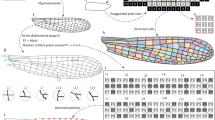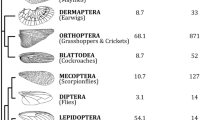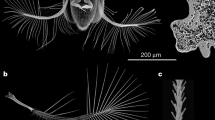Abstract
LITTLE is known about the effect of wind on the orientation of animals on the ground. Some insects resting in exposed places will often head upwind1. The newt Triton tœniatus walks in the same direction as an artificial air current2. Riders and airmen are familiar with the fact that horses tend to stand with their backs to a strong wind.
Similar content being viewed by others
Article PDF
References
Fraenkel and Gunn, "The Orientation of Animals", pp. 258 and 260 (Oxford, 1940); Kalmus, NATURE, 150, 405 (1942).
Czeloth, H., Z. vergl. Physiol., 13, 74 (1930).
Author information
Authors and Affiliations
Rights and permissions
About this article
Cite this article
KALMUS, H. Anemotaxis in Soft-skinned Animals. Nature 150, 524 (1942). https://doi.org/10.1038/150524b0
Issue date:
DOI: https://doi.org/10.1038/150524b0
This article is cited by
-
Plant volatiles and components influencing behavior of the field slug,Deroceras reticulatum (M�ll.)
Journal of Chemical Ecology (1980)
-
Effect of Air Currents, Light, Humidity and Temperature on Slugs
Nature (1943)



